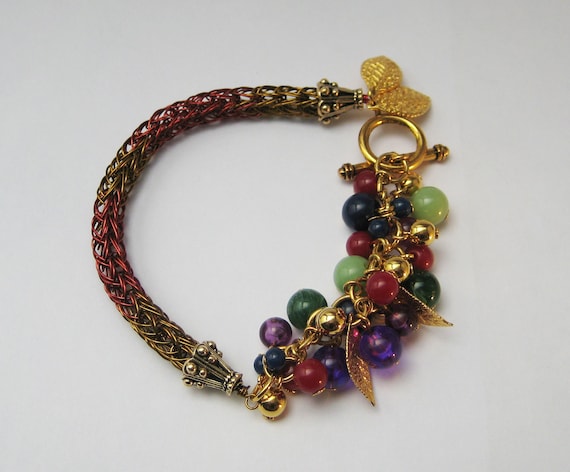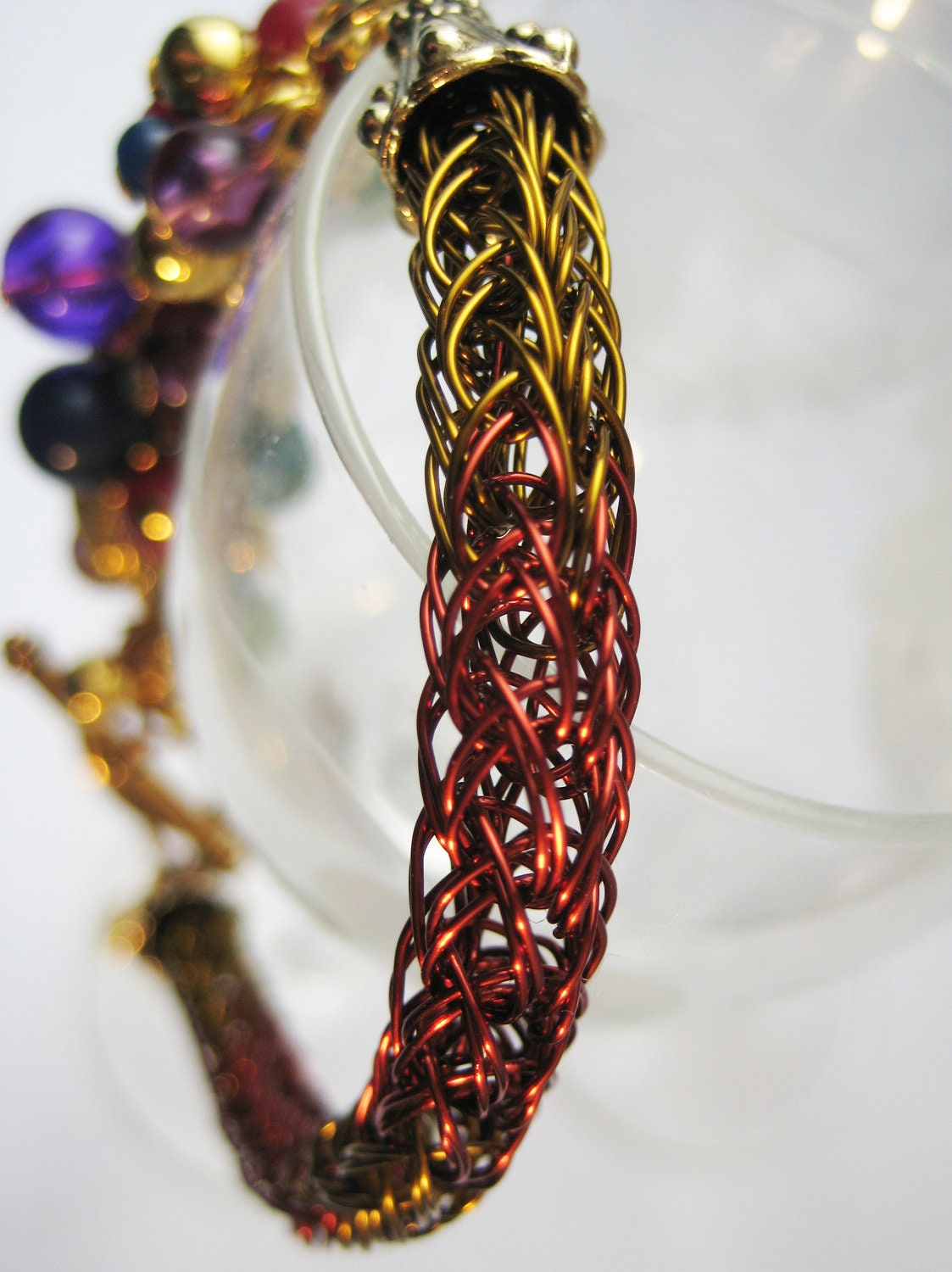This may sound snobbish, but I've made enough less-than-stellar bracelets to be convinced of the difference.
Imagine how a simple piece of yarn feels around your wrist. Say that you want the little knot facing up, sitting on the top of your arm. It probably stays there fairly well, with only some shifting.
Now, imagine putting a heavy glass bead on the yarn. Because of it's weight, it will always swing underneath your wrist. If you wanted it on top, then that's bad design, since the bead is not sitting where you want it.
But let's say you DO want it down there. Fine. But now the yarn is kind of tight around the top part of your wrist, and it is uncomfortable. That's bad design. A piece of jewelry should both look and feel just right.
While I'd love to pretend to always make perfect jewelry, I just don't.
Most of my first bracelets did not have heavy things attached to them, so all this balance stuff was not a problem. My first piece to be heavily accoutered was this one:
It feels great on my wrist. While the bead cluster does tend to fall to the underside of my wrist, it happens slowly, and the VK portion is stiff enough that it keeps the distribution of weight spread out. Yay for me!
On the bracelet below, however, the pearl cluster drags itself down on the wearer's wrist.
An otherwise attractive piece, it is not balanced well.
So here is another lesson on my way to actually making perfect jewelry. Or so I hope.



















